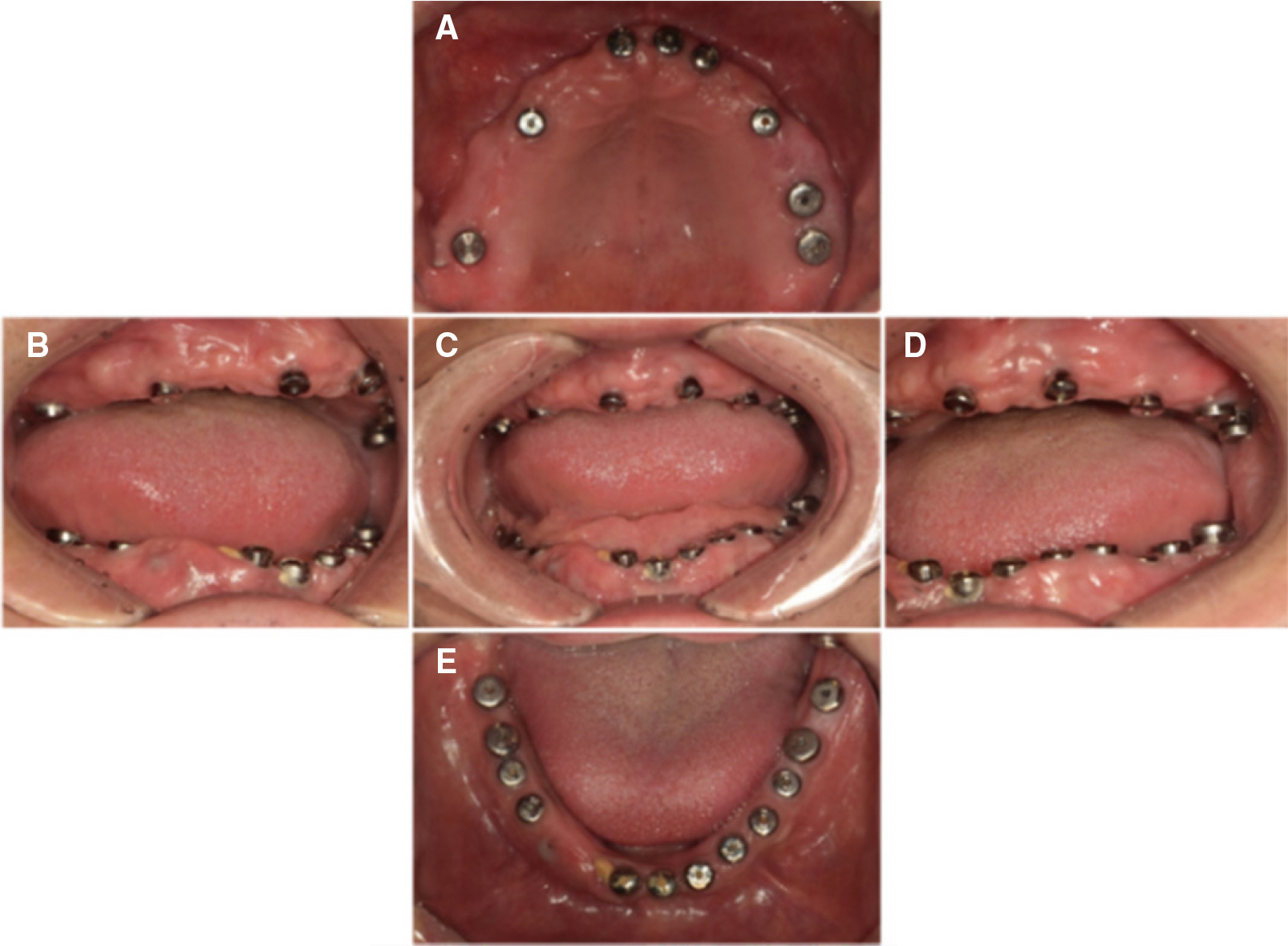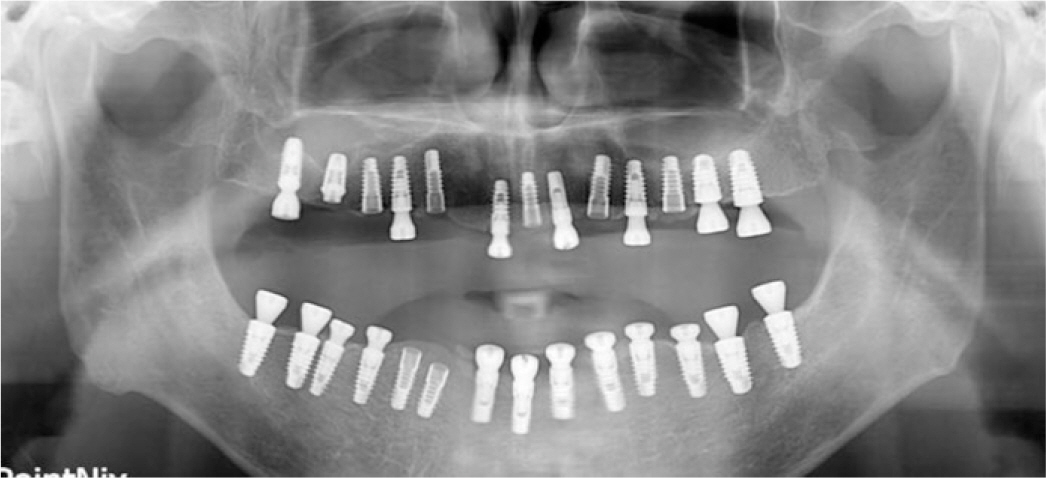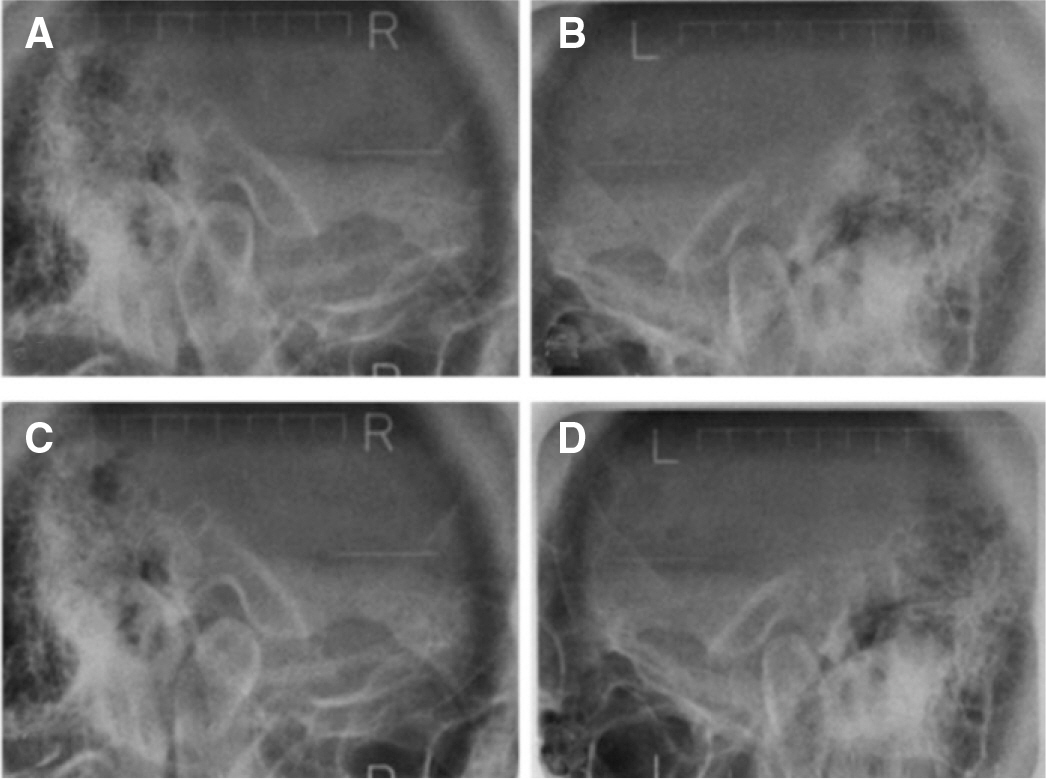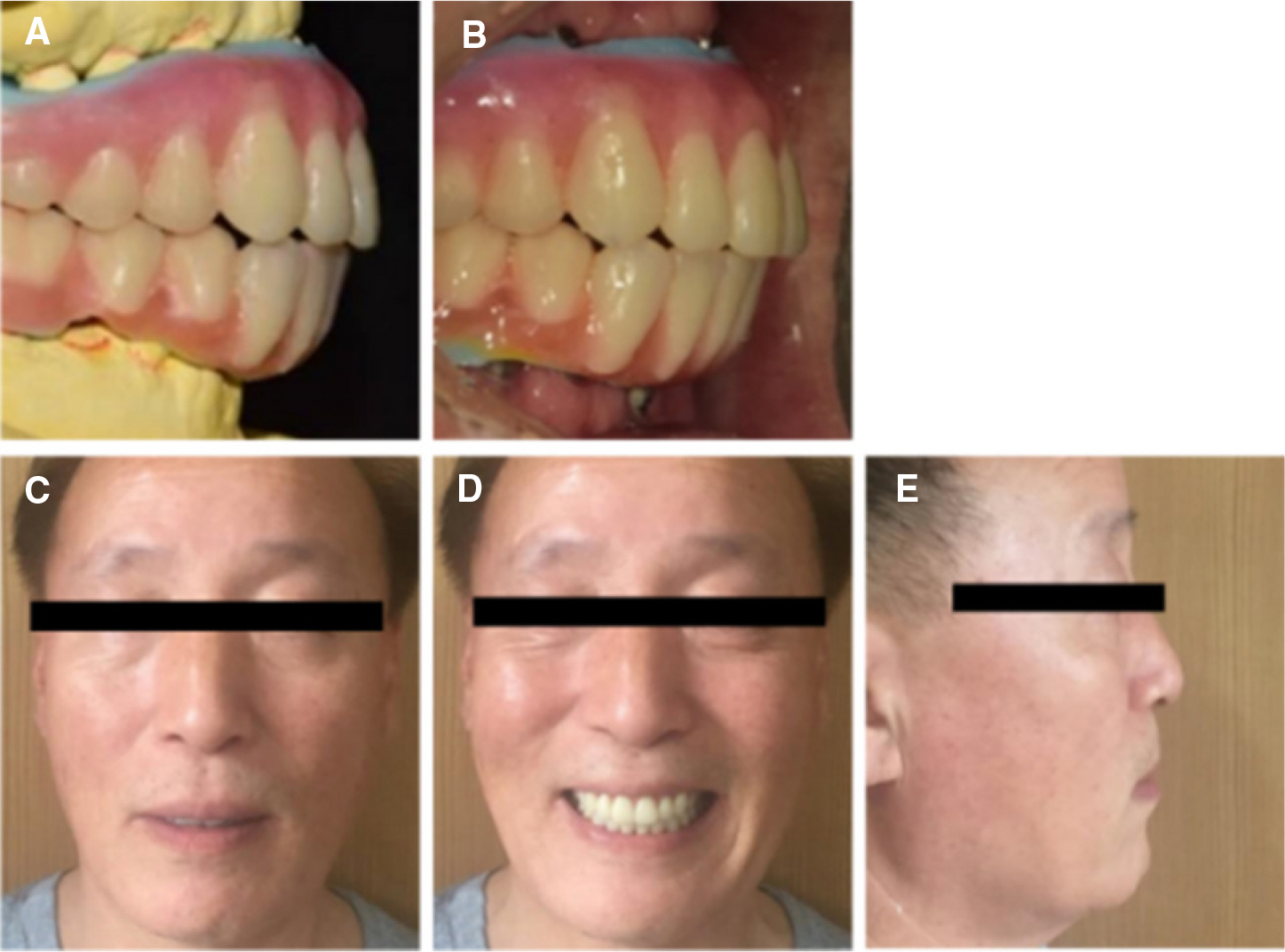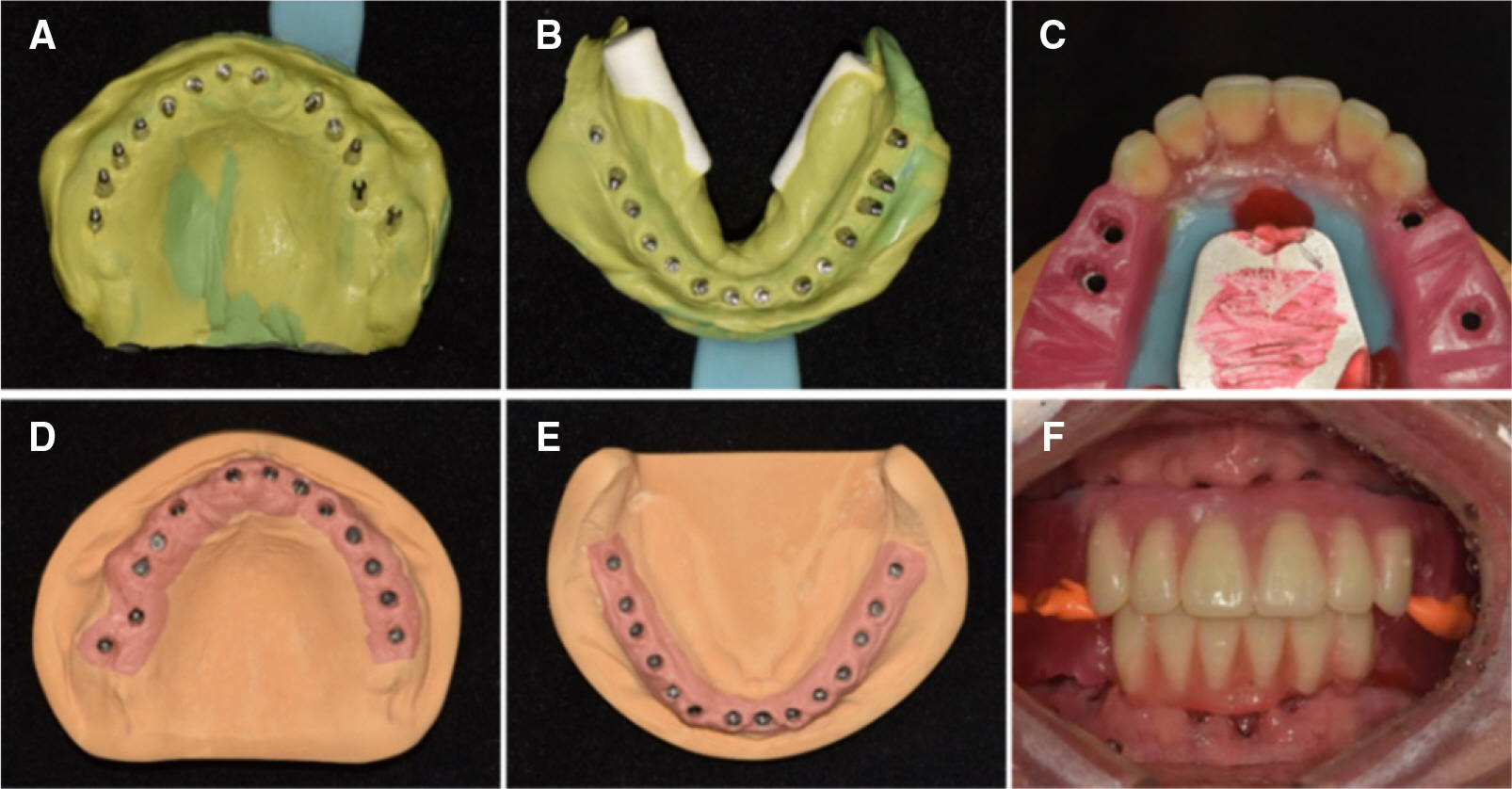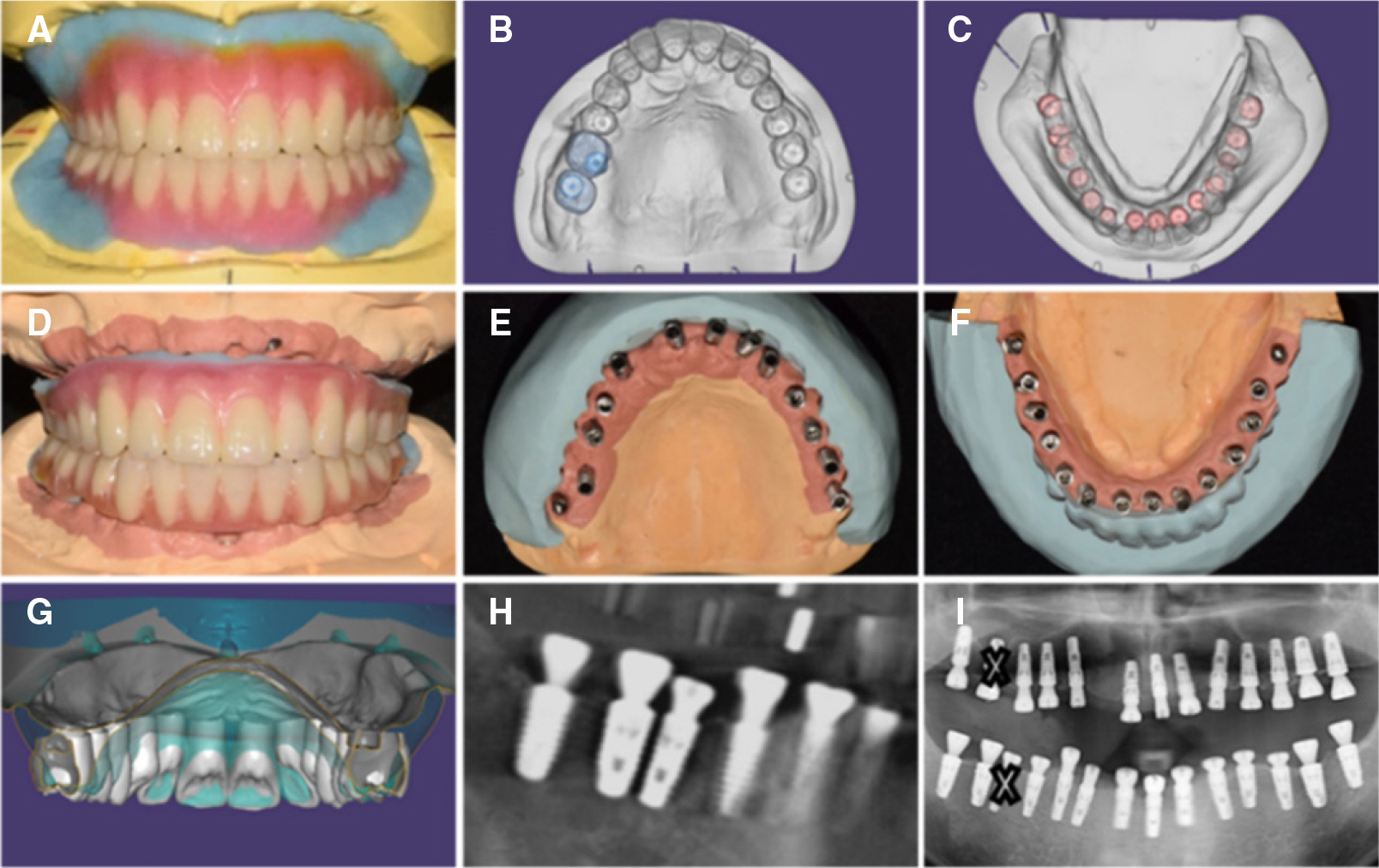J Korean Acad Prosthodont.
2017 Oct;55(4):427-435. 10.4047/jkap.2017.55.4.427.
Fixed prosthesis restoration in edentulous patient fully implanted without considering definitive prosthesis: A case report
- Affiliations
-
- 1Department of Prosthodontics, School of Dentistry, Kyunghee University, Seoul, Republic of Korea. odontopia@khu.ac.kr
- KMID: 2393915
- DOI: http://doi.org/10.4047/jkap.2017.55.4.427
Abstract
- The most important factor in the treatment of fully edentulous patients using implants is the shape of the definitive prosthesis. After the shape of the definitive prosthesis is determined, residual bone analysis and selection of the implant type, number and position should be followed. In this case, for restoration of an edentulous patient fully implanted (except the maxillary right lateral incisor) without considering definitive prosthesis, facial esthetics and possibility of fixed type prosthesis were evaluated using complete denture. It was determined that the fixed type prosthesis was possible. Implants that could not be used for the definitive prosthesis were excluded from the treatment plan and fixed type provisional restorations were fabricated. After four months of provisional restorations, the patient showed stable occlusion and esthetic satisfaction. Definitive prosthesis was made of zirconia using CAD/CAM (computer aided design and computer aided manufacturing). The results were satisfactory during the 3 months of follow-up period after termination of treatment.
Keyword
MeSH Terms
Figure
Reference
-
1.Almog DM., Sanchez R. Correlation between planned prosthetic and residual bone trajectories in dental implants. J Prosthet Dent. 1999. 81:562–7.
Article2.Misch CE. Dental implant prosthetics. 2nd ed.St. Louis: Mosby; Elsevier;2015. p. 187.3.Turner KA., Missirlian DM. Restoration of the extremely worn dentition. J Prosthet Dent. 1984. 52:467–74.
Article4.Mericske-Stern RD., Taylor TD., Belser U. Management of the edentulous patient. Clin Oral Implants Res. 2000. 11:108–25.5.Sadowsky SJ. The role of complete denture principles in implant prosthodontics. J Calif Dent Assoc. 2003. 31:905–9.6.Neves FD., Mendonça G., Fernandes Neto AJ. Analysis of influence of lip line and lip support in esthetics and selection of maxillary implant-supported prosthesis design. J Prosthet Dent. 2004. 91:286–8.
Article7.Savabi O., Nejatidanesh F. Interocclusal record for fixed implant-supported prosthesis. J Prosthet Dent. 2004. 92:602–3.
Article8.Tarnow DP., Cho SC., Wallace SS. The effect of inter-implant distance on the height of inter-implant bone crest. J Periodontol. 2000. 71:546–9.
Article9.Carlsson GE. Dental occlusion: modern concepts and their application in implant prosthodontics. Odontology. 2009. 97:8–17.
Article10.Wittneben JG., Millen C., Brägger U. Clinical performance of screw-versus cement-retained fixed implant-supported reconstructions-a systematic review. Int J Oral Maxillofac Implants. 2014. 29:84–98.11.Rajan M., Gunaseelan R. Fabrication of a cement- and screw-retained implant prosthesis. J Prosthet Dent. 2004. 92:578–80.
Article12.Abdulmajeed AA., Lim KG., Närhi TO., Cooper LF. Complete-arch implant-supported monolithic zirconia fixed dental prostheses: A systematic review. J Prosthet Dent. 2016. 115:672–7.
Article13.Misch CE. Dental Implant Prosthetics. 2nd ed.St. Louis: Mosby; Elsevier;2015. p. 277.14.Linkevicius T., Puisys A., Vindasiute E., Linkeviciene L., Apse P. Does residual cement around implant-supported restorations cause peri-implant disease? A retrospective case analysis. Clin Oral Implants Res. 2013. 24:1179–84.
Article15.Chee WW., Duncan J., Afshar M., Moshaverinia A. Evaluation of the amount of excess cement around the margins of cement-retained dental implant restorations: the effect of the cement application method. J Prosthet Dent. 2013. 109:216–21.
Article
- Full Text Links
- Actions
-
Cited
- CITED
-
- Close
- Share
- Similar articles
-
- Full mouth implant-supported fixed prosthesis restoration of an edentulous maxillary patient using computer-guided implant surgery
- Full mouth rehabilitation of edentulous patient with fixed implant prosthesis
- Complete mouth rehabilitation with fixed implant-supported prosthesis in an edentulous maxilla using dental CAD-CAM technology
- Fixed implant rehabilitation of maxillary edentulous patient using intraoral scanning digital workflow: a case report
- Fabrication of definitive complete-arch implant-supported fixed prosthesis in upper and lower completely edentulous patient using temporary prosthesis scan: a case report


